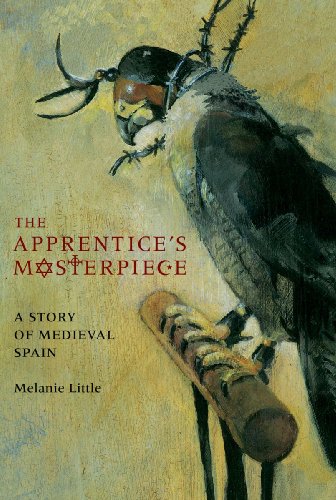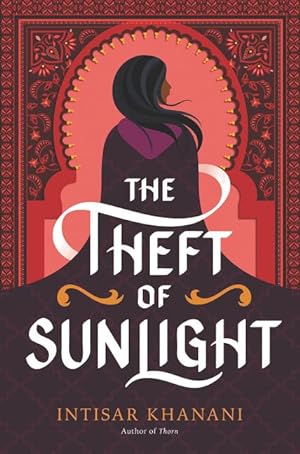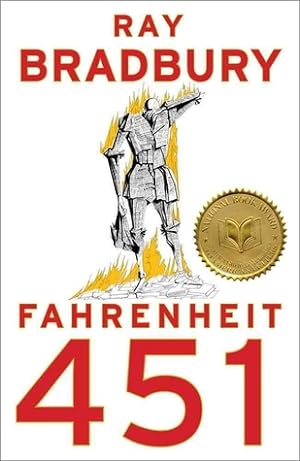
Synopsis
Fifteenth-century Spain is a richly multicultural society in which Jews, Muslims and Christians coexist. But under the zealous Christian Queen Isabella, the country abruptly becomes one of the most murderously intolerant places on Earth. It is in this atmosphere that the Benvenistes, a family of scribes, attempt to eke out a living. The family has a secret—they are conversos: Jews who converted to Christianity. Now, with neighbors and friends turned into spies, fear hangs in the air. One day a young man is delivered to their door. His name is Amir, and he wears the robe and red patch of a Muslim. Fifteen-year-old Ramon Benveniste broods over Amir's easy acceptance into the family. Startling and dramatic events overtake the household, and the family is torn apart. One boy becomes enslaved; the other takes up service for the Inquisitors. Finally, their paths cross again in a stunningly haunting scene.- Reflect on the dedication of the book “to victims of intolerance everywhere, and to those who have resisted by asking questions, even if only of themselves.” What is the author asking the reader to do?
- Prior to starting the book, read the prologue. Learn more about the history of Al-Andalus, the Muslim-ruled area covering modern day Spain and Portugal. When did they rule? For how long? How did Muslims gain control of Spain? Where did they come from? How did Muslims, Jews, and Christians live and work together? What were the scientific, technological, and cultural contributions which came out of this region? How did Muslim rule in Spain end?
- Prior to reading, understand the origins of the Inquisition. What is heresy? Why was the Spanish Inquisition formed during the reign of Queen Isabella and King Ferdinand II? How do the stated motives of Inquisition officials differ from their true objectives?
- Point out the distinction between the Muslim belief of how deeds are recorded compared to the depiction in the book on p. 121: “A good one, to protect him. And a not-so-good one, to sometimes put him to the test.” Muslims believe two angels, commanded by Allah ﷻ, watch and record all our actions. The one on our right records good deeds, while the one on our left records bad deeds.
- What is propaganda? Find examples of propaganda in the story that are used to create fear of Muslims, Jews, and Christian converts. What happens when governments create a false narrative of us vs. them?
- What was life like for a converso? Think about how Ramon lives. Is he able to eat, sleep, travel, and dress as he wishes?
- What was life like for a mudejar? Think about how Amir lives. Do you think Ramon’s parents’ treatment of Amir was commonplace?
- How was discrimination built into society during the time of the Spanish Inquisition? What tactics were used to rule over the conversos and mudejares?
- What fear tactics were employed to meet the objectives of the Spanish Inquisition? Why do you think it was required for all of Cordoba to watch the autos-da-fé?
- How was Cordoba described during the time of Muslim rule? What was it like during Ramon’s time?
- Which vice led to Ramon’s employment as a scribe for the Inquisition? What are his attempts at redemption?
- Why does the Inquisition need scribes? How do they use the recorded information?
- What tactics were used to build the wealth needed to conquer Granada and reunite Spain under one rule?
- Reflect on the irony of Ramon serving the Inquisition as a scribe. Where does he send his wages?
- During this time period, Spain’s society was divided into groups by race and religion with various forms of oppression leveled against each. Yet, there are always people among the privileged classes who will recognize injustice and will risk their lives to help others. Discuss the old Christian lady who hides the Benvenistes as the attacks go on in the New Christian quarter against the conversos. (p. 15). What were her motives? What did she risk by choosing to act?
- Ramon remembers his father once taught him: “The man who saves one life saves the whole world” (p. 129). In the Quran, Allah ﷻ says “whoever takes a life … it will be as if they killed all of humanity; and whoever saves a life, it will be as if they saved all of humanity” (5:32). How does this lesson apply to Ramon? Even though he didn’t have the power to save everyone who was facing oppression, he could act to save one life–Amir’s–and hopefully redeem himself in the eyes of his Lord.
- Discuss this hadith with your child: “Whosoever of you sees an evil, let him change it with his hand; and if he is not able to do so, then [let him change it] with his tongue; and if he is not able to do so, then with his heart—and that is the weakest of faith” (Nawawi). How does this hadith relate to the story?
- Discuss this poem by Martin Niemöller. Does this resonate with the reading?
Mindful Muslim Review
“…the Muslims ruled here for lifetimes. Seven lifetimes, in fact. Hundreds of years! How their streets ran with fountains. How they planted trees bearing fruits no Christian had heard of till then. How the libraries here in our very city held many more books than the sky contains stars.”
Such was Cordoba, where Muslims, Christians, and Jews lived together, each practicing their own faith, while flourishing as a “great society of culture, learning, and coexistence.” Eventually, the Muslim-ruled Kingdom of Al-Andalus disintegrated into warring factions giving way to the gradual Christian reconquest of Spain in the 15th century. What followed was the Spanish Inquisition characterized by the persecution, mass murders, and expulsion of remaining Muslims and Jews from Christian Spain.
This somber piece earns our Gold Star for its grave and palpable account of the propaganda, systemic discrimination, confusion, fear, mental anguish, and horrific atrocities faced by Jews and subsequently Muslims during the Spanish Inquisition. The narrative follows two young boys whose paths become inextricably intertwined, and effortlessly weaves in the historical details of the time period. It illustrates the consequences of jealousy through the story of an ethnically Jewish boy and his family’s Muslim servant, both working as scribes preserving knowledge before it is lost forever to the tides of history. This book can be used as a novel study following an in-depth historical examination of Al-Andalus from its inception to its demise.
By evoking powerful emotions, historical fiction builds empathy and creates a compelling connection toward a time, place, and people of our past so that we may reflect on and learn from their successes and mistakes. It allows us to better understand and learn from turning points in history and reflect on the wisdom of Allah’s ﷻ plan in the world.
Teaching Tools
First they came for the Communists
And I did not speak out
Because I was not a Communist
Then they came for the Socialists
And I did not speak out
Because I was not a Socialist
Then they came for the trade unionists
And I did not speak out
Because I was not a trade unionist
Then they came for the Jews
And I did not speak out
Because I was not a Jew
Then they came for me
And there was no one left
To speak out for me




